|
|
Atlantic Hurricane Season is Here: Be Aware, Be Strong, Be Prepared
By Paul F on Jun 1, 2016 at 11:32 AM
On May 27th, The National Oceanic and Atmospheric Administration (Sea Grant's parent federal agency) issued the 2016 Atlantic hurricane season outlook. It calls for a near-normal season with a 70-percent likelihood of 10-16 named storms and 4-8 hurricanes, of which 1-4 could be major hurricanes.
To help clarify concerns surrounding NOAA's outlook announcement, an online Q&A forum was held on June 1st (which is the start of hurricane season) with Dr. Gerry Bell, a hurricane climate specialist and research meteorologist with NOAA's National Weather Service at the Climate Prediction Center. For a record of Dr. Bell's responses to questions about NOAA's predictions for this year and the science behind how it makes those predictions, check out the transcript from The New Reddit Journal of Science.
Also, for more on this year's hurricane season announcement, see New York Sea Grant's related news item, which focuses on this and another related topic, that of being prepared for forthcoming severe storms. As outlined in this news item, the near-normal prediction for 2016's Hurricane Season suggests more activity in Atlantic is possible than has been during the last three below-normal years. Also featured is a full audio stream of NOAA's hurricane outlook announcement as well the trailer for the NOAA-funded video on Sea Grant's Coastal Storm Awareness Program.
The 4-1/2 minute trailer for NOAA Sea Grant's Coastal Storm Awareness Program's 23-minute documentary, view-able on YouTube.
The key to CSAP, a $1.8M suite of 10 social science projects administered by Sea Grant programs in New York, New Jersey and Connecticut, is to help better understand how people respond to coastal storm warnings. "These storms will not go away," says NYSG Director Bill Wise. "They are likely to increase and, perhaps, become even more severe on average with global warming."
Findings from these 18-month community-based investigations are detailed in the recent news item "NOAA Sea Grant Coastal Storm Awareness Program Comes Ashore."
For more on NOAA Sea Grant's Coastal Storm Awareness Program see www.nyseagrant.org/csap.
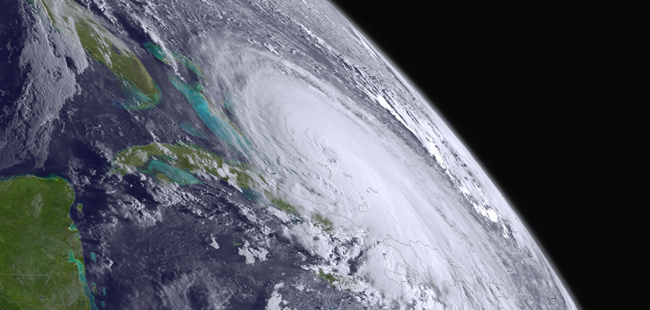
In October 2015, Joaquin was a category 4 hurricane whose strong winds and storm surge devastated a handful of islands in the central and southeastern Bahamas. Joaquin, which took the lives of 34 people, is the strongest October hurricane known to have affected the Bahamas since 1866 and the strongest Atlantic hurricane of non-tropical origin in the satellite era. Photo: NOAA.
Helping You to Better Prepare
"Our Coastal Storm Awareness Program explored the human dimensions of the coastal storm preparedness planning and response issue," says Wise. "This is an issue that people in the greater New York metropolitan area have had to deal with for a long time and [Superstorm] Sandy has brought it to the forefront."
In an effort to help ready you for future storms, Sea Grant offers a number of #HurricanePrep tips and resources from NOAA, its other line offices (including the U.S. National Weather Service and National Hurricane Center) as well as partner organizations including the Federal Emergency Management Agency (FEMA).
What You Should Know About Hurricanes
- It only takes one storm to change your life and community.
- Know what to do before, during, and after a hurricane.
- Prepare before hurricane season starts. Pacific hurricane season starts May 15 and Atlantic hurricane season starts June 1: http://1.usa.gov/1poO5wl.
- Create a communications plan with your family before a hurricane: ready.gov/make-a-plan.
- Have emergency supplies in place at home, at work, and in the car.
- Know your local community’s evacuation plan and evacuation routes.
- Listen to local officials.
- Online hurricane resources: From developing plans, to assembling
supplies, to learning where you can find the most up to date information
on hurricanes, NOAA's NWS has you covered. Visit http://go.usa.gov/3KM8Y to learn more.
Additionally, check out:
Determine Your Risk
- Find out today what types of wind and water hazards could happen where you live, and then start preparing now for how to handle them.
- Live on the coast? You are most at risk for extreme winds & flooding from rain & storm surge during a hurricane.
- Live inland? You are at risk for wind, thunderstorms, flooding, & power outages during a hurricane.
- Think because you live inland a hurricane will not impact you? Wrong. Inland communities should prepare for flooding & high winds.
- Hurricanes not only result in high winds, but floods, too. If you see a flooded path: Turn Around, Don’t Drown
- Hurricane watch = conditions possible w/in the next 48 hrs. Hurricane warning = conditions are expected within 36 hrs. Learn how to prepare: ready.gov/hurricanes.
- Do you want to have a better understanding of the hurricane risk you and your community face? Check out this map of the U.S. and the frequency of hurricane and tropical storm activity by county. http://1.usa.gov/1poO5wl
- Where you live, the structure of your home, & your personal circumstances all contribute to your hurricane risk. Learn more about preparing for a hurricane with America’s PrepareAthon. http://1.usa.gov/1sVepZI
Develop an Evacuation Plan
Before a storm, develop a hurricane evacuation plan. Practice the
plan at night, during inclement weather, and other times to familiarize
yourself with your route.
- The first thing you need to do is find out if you live in a hurricane storm surge or flood evacuation zone or if you are in a home that would be unsafe during a hurricane. If you are, figure out where you would go and how you would get there if told to evacuate.
Where is your local evacuation route? Make sure you know the answer
before the next hurricane. If authorities advise or order a hurricane
evacuation, do so immediately.
If you rely on public transportation, contact your local
emergency management agency about evacuation procedures before a
hurricane.
If a hurricane or tropical storm should threaten your area, would you
know what to do? Contact your local emergency management office and find
out if you live in an evacuation zone and the evacuation route. For
tips and information visit: ready.gov/today.
In NYC, the Office of Emergency Management provides related information via its "Know Your Zone" campaign.
- If you were told to evacuate due to a hurricane, where would you go? What would you take? Make a PLAN to answer these questions. http://1.usa.gov/1XU9NUZ
- Flood waters on roadways have super power. The force of moving water can even sweep away a sports utility vehicle. When evacuating a storm, avoid driving through flooded roadways. Turn Around, Don’t Drown!
Driving through flooded roadways is dangerous.
- Take action now, before the storm hits. America’s PrepareAthon! offers free hurricane tools and resources that will help you prepare. Check them out now. http://1.usa.gov/1N3Si1U
- Keep your car’s gas tank at least half full in case you need to quickly evacuate for a hurricane.
Keep emergency supplies in your car in case you need to evacuate due to a hurricane.
Assemble Disaster Supplies
Depending on your location, you may need to stay where you are for an extended time until flooding recedes and roadways are restored. You are going to need supplies to get through the storm and for the potentially lengthy and unpleasant aftermath. Have enough non-perishable food, water, and medicine to last each person in your family a minimum of three days and for a week or more if possible.
Suggested items to build and/or restock your disaster supply kit include food, water, medications, a flashlight, batteries, chargers, cash, and first aid supplies in case you need to shelter-in-place during a storm. Be sure to have enough supplies to last for at least three days. In some locations you may need supplies for a week or more in order to stay where you are until flood waters subside and roads are restored.
Strengthen Your Home
Make sure your home is in good repair and up to local hurricane building code specifications. However, always remember, if local officials tell you to evacuate, listen to them. Whether you stay or evacuate, be sure to include flood-proofing measures such as using a water sealer in areas that have basements, sandbagging, elevating utilities, and moving furniture to the second floor. Consult www.flash.org for information on strengthening for wind such as window protection, garage door protection, roof protection, and door protection. Secure outdoor items that could be blown away and cause damage.
- Bring in outdoor furniture & anything else that is not tied down to prevent injury/damage from debris.
- Trim trees & shrubs. High winds can turn branches into projectiles during a storm.
- Reduce property damage in the event of a hurricane by retrofitting (i.e., reinforcing) the roof, windows, and doors. http://1.usa.gov/1R73EQA
- Prepare your property before a hurricane by installing storm shutters. More mitigation tips at: http://1.usa.gov/1o9qmti.
- High winds ahead! Permanent storm shutters offer protection for your home during a hurricane.
- Reduce potential property damage by elevating and anchoring utilities & installing sewer backflow valves. Also, use flood damage resistant materials.
- When constructing or upgrading a home, consider elevating the structure to better protect against floodwaters and/or storm surge.
Identify Trusted Sources of Information for a Hurricane Event
NOAA's National Hurricane Center and Central Pacific Hurricane Center are your official sources for hurricane forecasts and the issuance of hurricane watches and warnings. Your local NOAA National Weather Service forecast office provides information regarding the expected impacts from the storm for your area.
Emergency managers will make the decisions regarding evacuations.
- How would you learn about important updates from local officials if a hurricane was heading your way? Downloading local alerts and warning apps to your phone is an easy way to stay prepared and one of the 10 Ways to Prepare as part of America’s PrepareAthon! Learn more with the Be Smart: Know Your Alerts and Warnings guide. http://1.usa.gov/1R8IfX7
- Understanding the difference between a hurricane watch and a hurricane warning is critical. Take action now to learn what you need to know to stay safe.
- Know before you go. Familiarize yourself with key weather alert terminology to ensure that you recognize the looming weather risks: ready.gov/hurricanes.
- It is time to go. If you have been instructed to evacuate, please do so. Listen to local officials to save yourself and your family.
- If local authorities say roadways are not passable, stay off the roads. Never drive on flooded roadways. After the hurricane, return home only when authorities advise it is safe.
- Stay weather alert. Keep track of your local weather forecast by following the National Weather Service.
Complete Your Written Hurricane Plan
The time to prepare for a hurricane is before the season begins, when you have the time and are not under pressure. If you wait until a hurricane is on your doorstep, the odds are that you will be under stress and will make the wrong decisions. Take the time now to write down your hurricane plan, know where you will stay or go to be safe for the storm, and get your supplies.
- Your family’s needs change over time – make sure you have what you need for this year’s hurricane season. ready.gov/considerations
- Do you have a communication plan for when the hurricane passes? Be sure your family knows where you are! Build a family communications plan today: http://1.usa.gov/1JPWKf0.
- You may not be with your family when a hurricane strikes, so it is important to plan how you will communicate with each other. Develop and practice your communication plan before a storm threatens your area. America’s PrepareAthon! offers free tools to help you create a family communication plan. You can even keep it right in your wallet! http://1.usa.gov/1JPWKf0
- In a disaster, it may be easier to make a long-distance phone call than to call in-town because local phone lines may be jammed. Identify someone outside of your community or state as a central point of contact to help your family reconnect. ready.gov/make-a-plan
In Photos: Raising Coastal Storm Awareness
(Photo Credits: Jana Baldwin/FEMA)
Evacuation
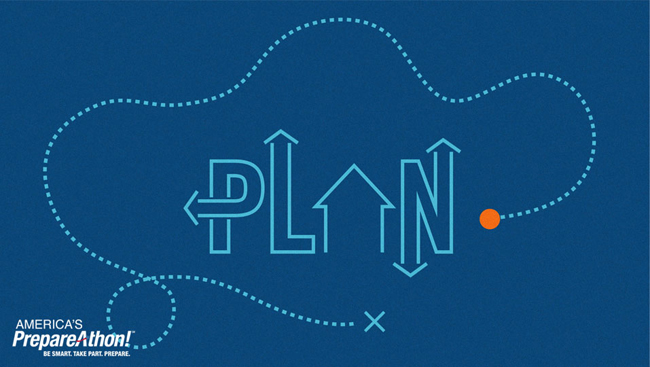
You may have to evacuate quickly due to a hurricane. Learn your evacuation routes & identify where you will stay. Have an plan. ready.gov/make-a-plan.

Tip: Know how to evacuate and listen to local officials. Learn more at ready.gov/hurricanes.
Emergency Kit
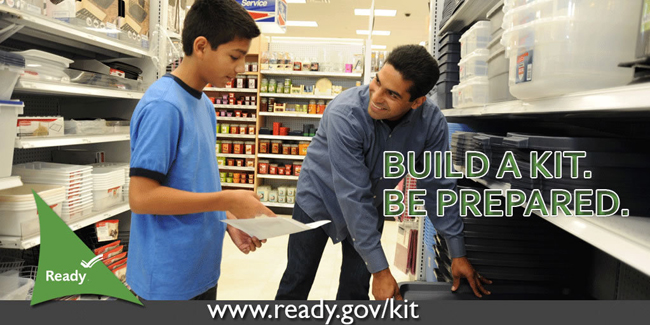
Build a kit. Be prepared. Include a hand-crank or battery powered radio. Also, extra $$, as ATM and credit card machines may not work during an extended power outage. Find out more at www.ready.gov/kit.
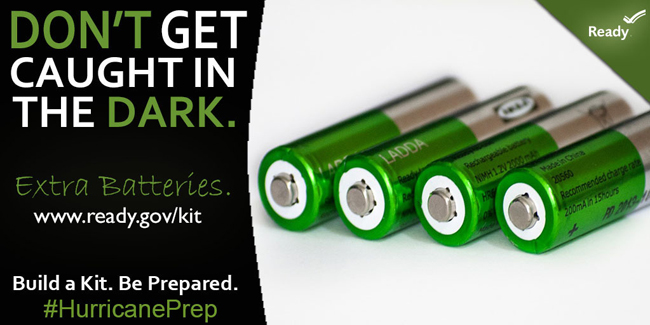
Don't get caught in the dark. Be prepared with extra batteries. Build a kit. Be prepared.
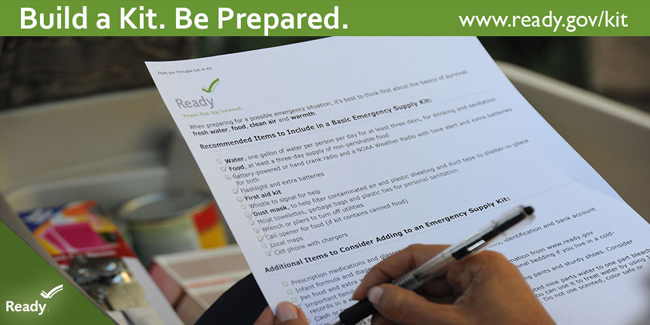
Build a Kit. Be Prepared. As part of your family’s emergency kit, include games & toys to keep children entertained.
Family Planning
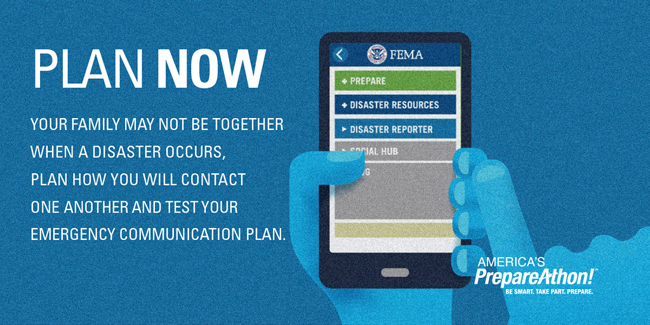
Plan now. Your family may not be together when a disaster occurs, plan how you will contact one another and test your emergency communication plan: http://go.usa.gov/3KMQ4.
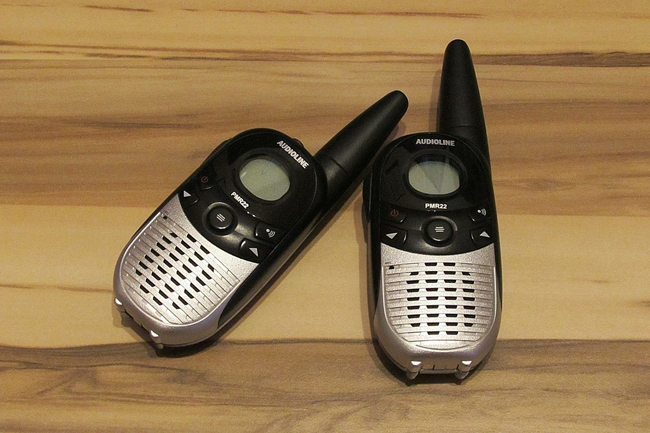
In the event of a weather disaster, walkie talkies can be a valuable tool for your family to use to communicate -- especially if phone lines are down.
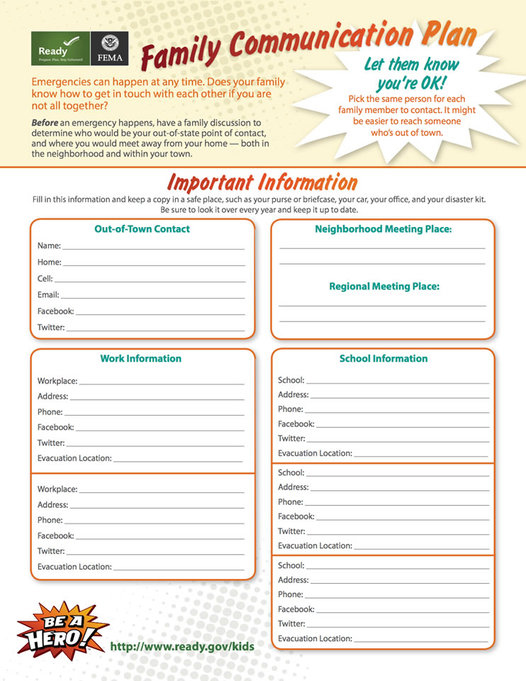
Emergencies can happen at any time. Does your family know how to get in touch with each other if you are not all together? Before an emergency happens, have a family discussion to determine who wold be your out of state point of contact and where you would met away from your home -- both in the neighborhood and within your town.
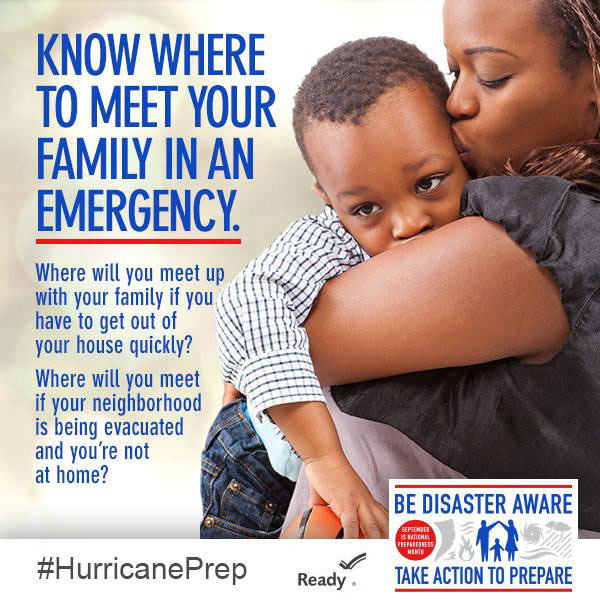
Know where to meet your family in an emergency.
Be Prepared
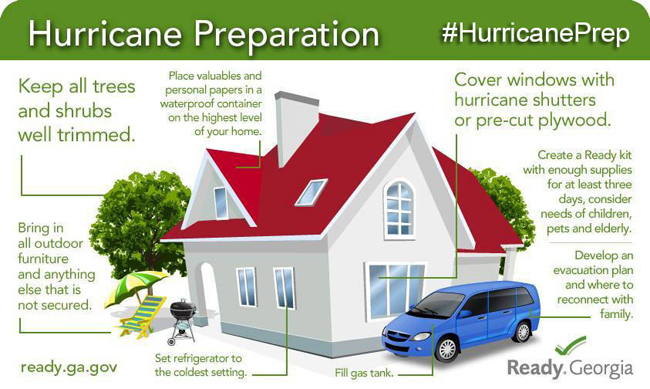
Prepare your home for hurricanes. Find out more at ready.gov/hurricanes.
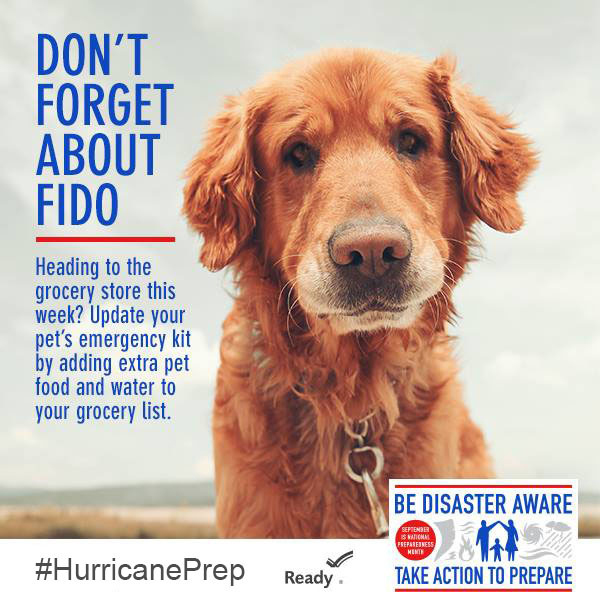
Don't forget about Fido! Heading to the grocery store this week? Update your pet's emergency kit by adding extra pet food and water to your grocery list.
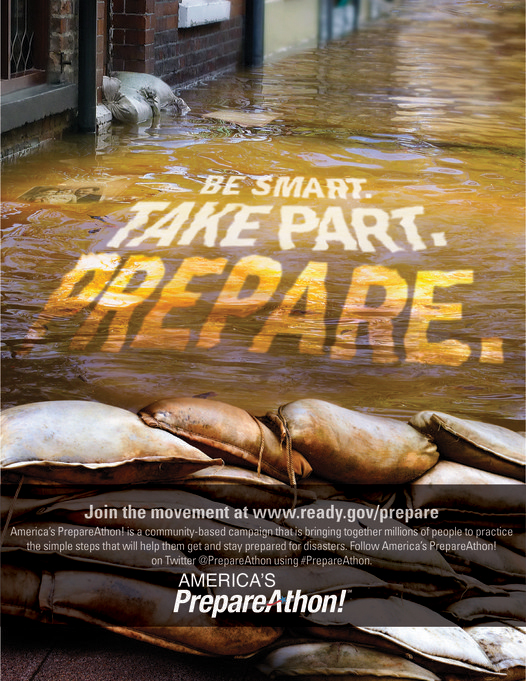
Be Smart. Take Part. Prepare. Hurricanes are not just powerful gusts of wind – they can produce dangerous amounts of rain & flooding, too.
More Info: New York Sea Grant
New York Sea Grant (NYSG), a cooperative program of Cornell University
and the State University of New York, is one of 33 university-based
programs under the National Sea Grant College Program (NSGCP) of the
National Oceanic and Atmospheric Administration (NOAA). The NSGCP
engages this network of the nation’s top universities in conducting
scientific research, education, training and extension projects designed
to foster science-based decisions about the use and conservation of our
aquatic resources. Through its statewide network of integrated
services, NYSG has been promoting coastal vitality, environmental
sustainability, and citizen awareness about the State’s marine and Great
Lakes resources since 1971.
New York Sea Grant maintains Great Lakes offices at SUNY Buffalo, the
Wayne County Cooperative Extension office in Newark and at SUNY Oswego.
In the State's marine waters, NYSG has offices at Stony Brook University
and Stony Brook Manhattan, in the Hudson Valley through Cooperative
Extension in Kingston and at Brooklyn College.
For updates on Sea Grant activities: www.nyseagrant.org has RSS, Facebook, Twitter, and YouTube links. NYSG also offers a free e-list sign up via www.nyseagrant.org/coastlines for its flagship publication, NY Coastlines/Currents, which is published several times a year.
|